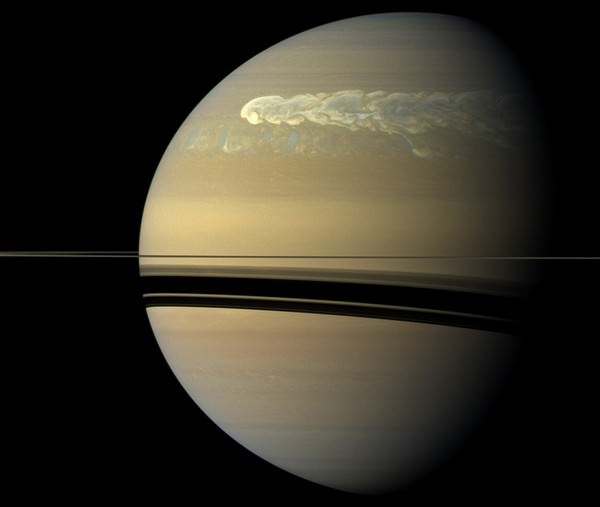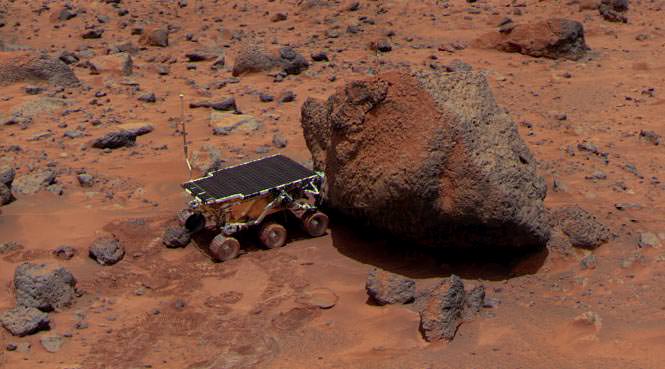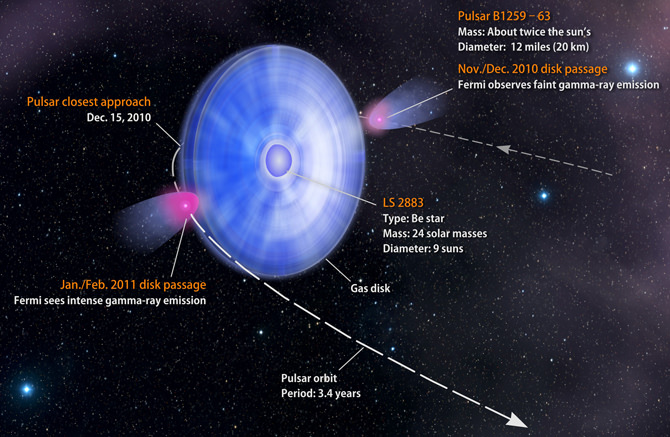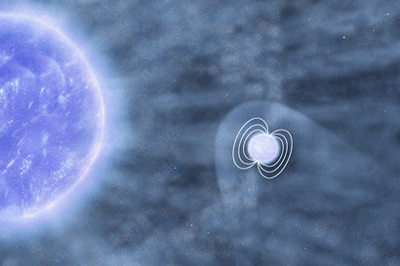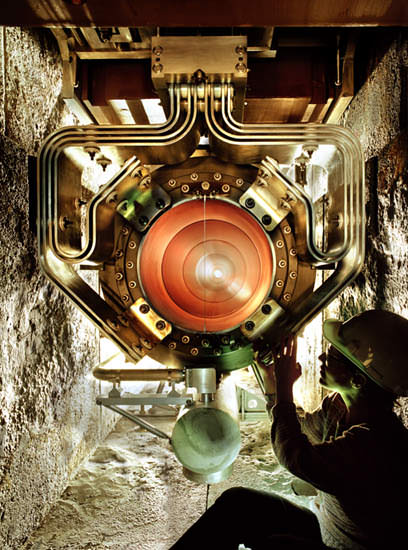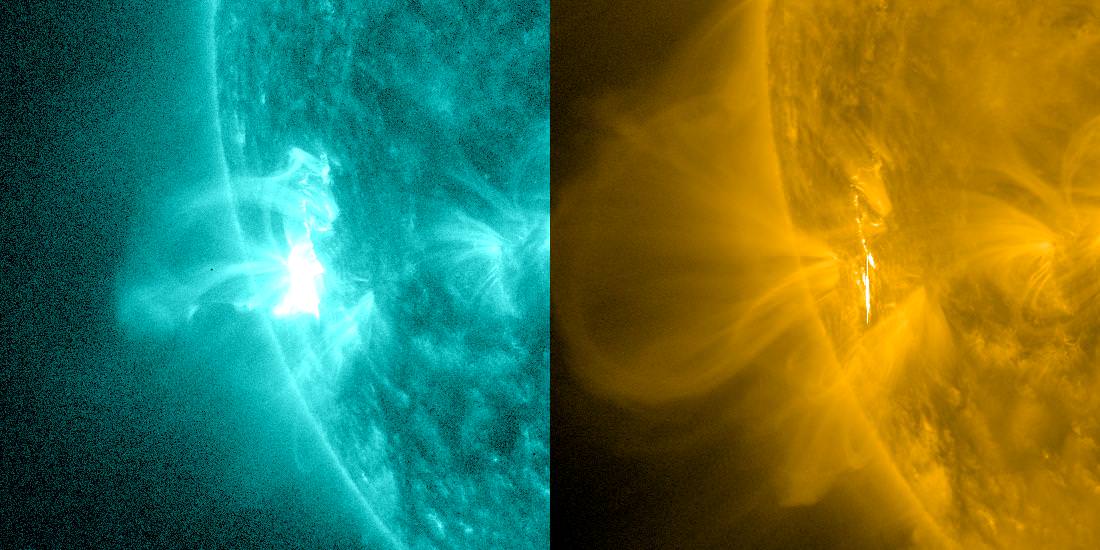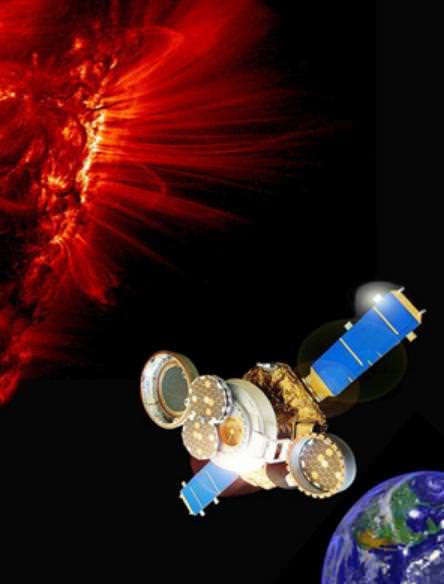[/caption]
It’s five hundred times bigger than any anything like it observed by the Cassini Mission in the last two years. It’s encompassing approximately 2 billion square miles (4 billion square kilometers) of Saturn’s surface. It’s releasing lightning bolts at a rate of ten per second and it’s happening ten times more frequently than other storms monitored since 2004. It’s so intense that’s it’s even visible in larger amateur telescopes. Just what is it? A Saturn Super Storm…
“Last December, a remarkable thing happened at Saturn. A massive, hissing, lightning-producing storm violently erupted in the northern mid-latitudes of Saturn’s atmosphere and grew to gargantuan proportions.” says Carolyn Porco. “By the end of January, it had wrapped itself entirely around the planet, developing an enormous degree of wavy, even sensuous, details, reminiscent of the clouds on Jupiter.”
Known as “Great White Spots”, these huge storms aren’t new to Saturn – they are common each Saturnian year. While they are common to the ringed planet’s northern summer, right now it’s northern spring. This makes the Saturn Super Storm an early – and unexpected – arrival.
“Prior to the planet’s August 2009 northern vernal equinox, when the sun was shining in the southern hemisphere, the location of all observed storm activity on Saturn was a band encircling the planet at 35 degrees south latitude that imaging scientists had dubbed `Storm Alley’. Well, to our great puzzlement, this new storm — now 500 times larger than any previously seen by Cassini at Saturn and 8 times the surface area of Earth — has erupted at 35 degrees /north/ latitude.” says Ms. Porco. “The shadow cast by Saturn’s rings has a strong seasonal effect, and it is possible that the switch to powerful storms now being located in the northern hemisphere is related to the change of seasons and the changing position of Saturn’s ring shadow. But why the obvious hemispheric symmetry in storm eruption exists is not yet known.”
NASA’s Cassini spacecraft was listening to the sounds of the storm, too. Much like our terrestrial lightning causes a static effect on an AM radio, Saturn creates a phenomena known as Saturn electrostatic discharges. Check out this audio file of the action!
“The storm is also a prodigious source of radio noise, which comes from lightning deep in the planet’s atmosphere. As on Earth, the lightning is produced in the water clouds, where falling rain and hail generate electricity. The mystery is why Saturn stores energy for decades and releases it all at once. This behavior is unlike that at Jupiter and Earth, which have numerous storms occurring at any one time.” explains Dr. Porco.
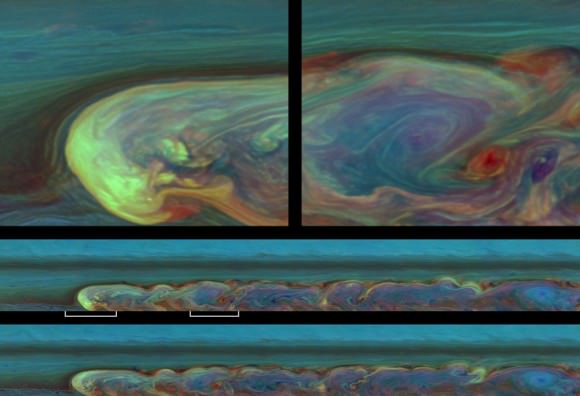
Violent, yes… But incredibly beautiful. This false color image reveals clouds at different altitudes as seen by the Cassini spacecraft from a distance of approximately 1.5 million miles (2.4 million kilometers). Blue represents high and semi-transparent. Yellow and white are optically thick at high altitudes. Green is intermediate, while red and brown are low altitude unobscured by high clouds. Last, but not least is dark blue – a thin haze with nothing but Saturn below it. Scientists theorize the lightning is formed at the base cloud layer where water ice is covered by crystallized ammonia.
“This storm is thrilling because it shows how shifting seasons and solar illumination can dramatically stir up the weather on Saturn,” said Georg Fischer, a radio and plasma wave science team member at the Austrian Academy of Sciences in Graz. “We have been observing storms on Saturn for almost seven years, so tracking a storm so different from the others has put us at the edge of our seats.”
Original Story Source: JPL / NASA News.

